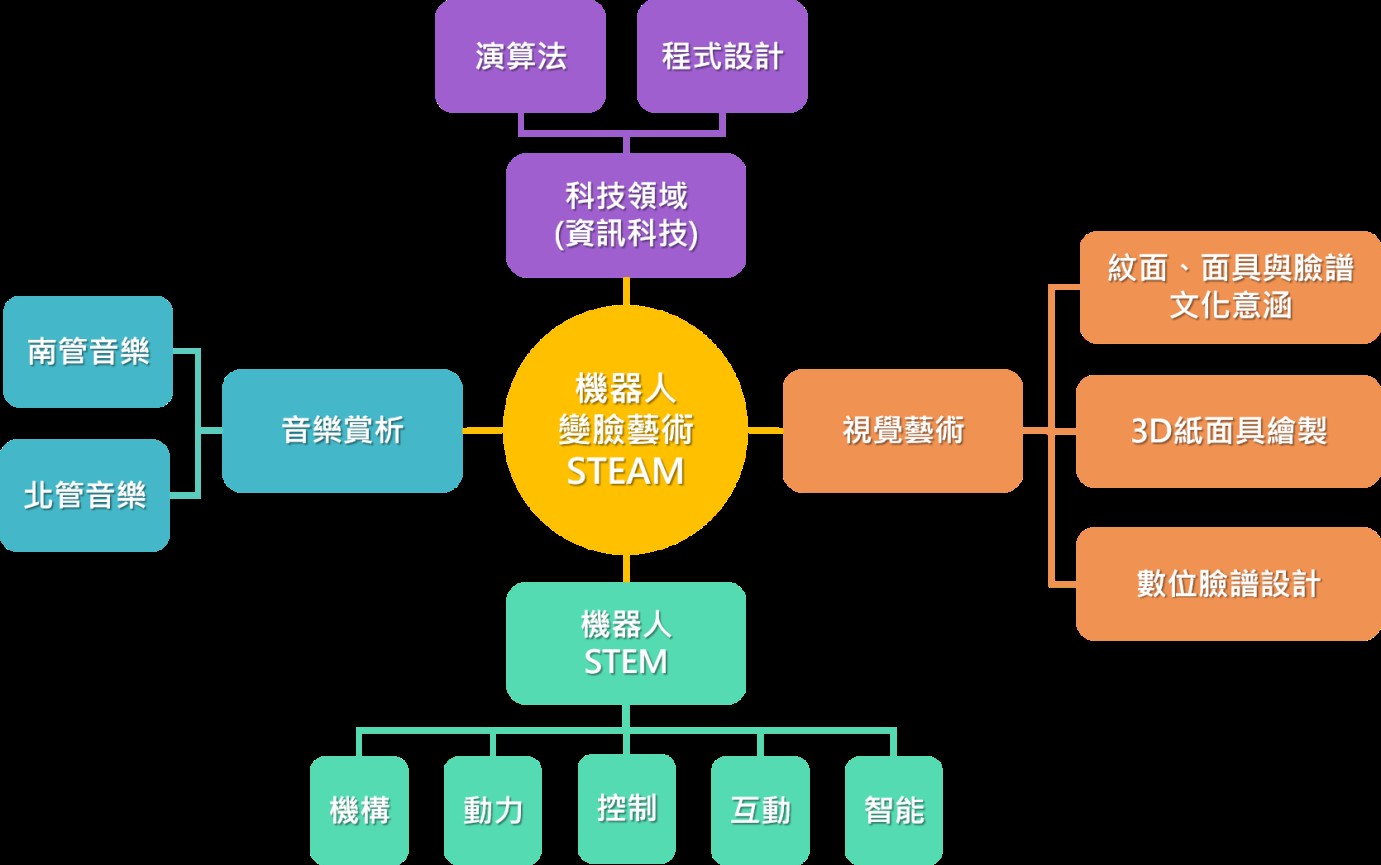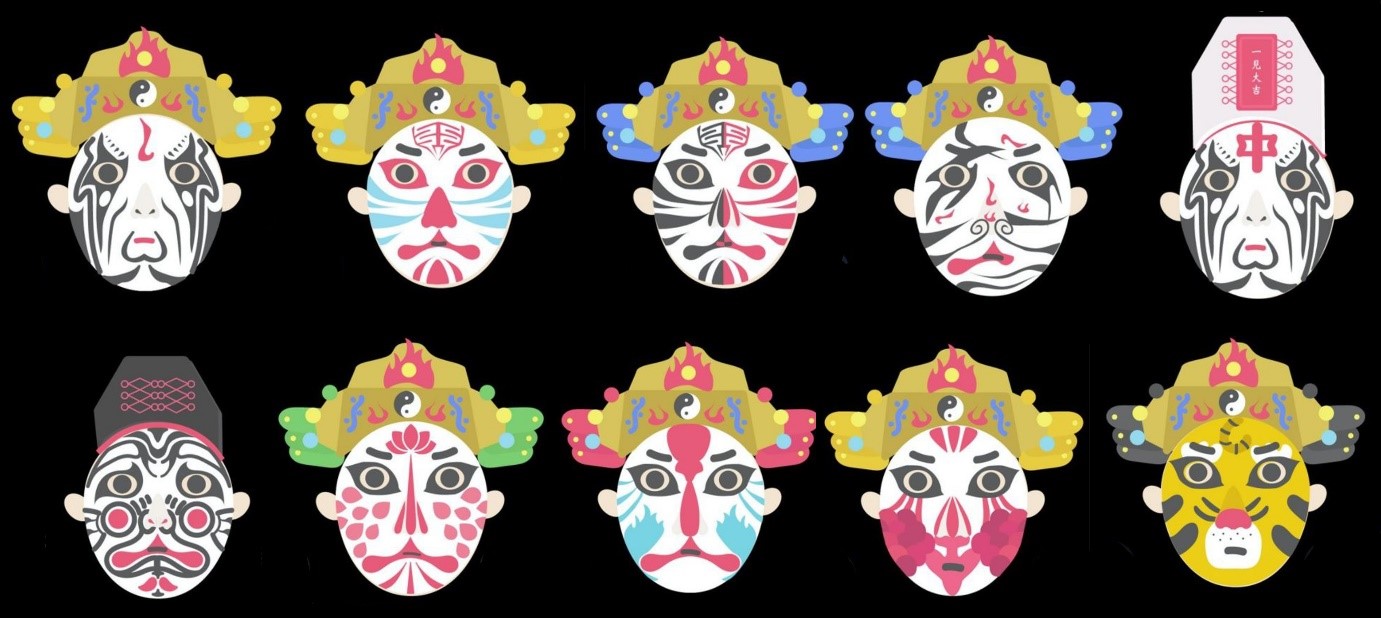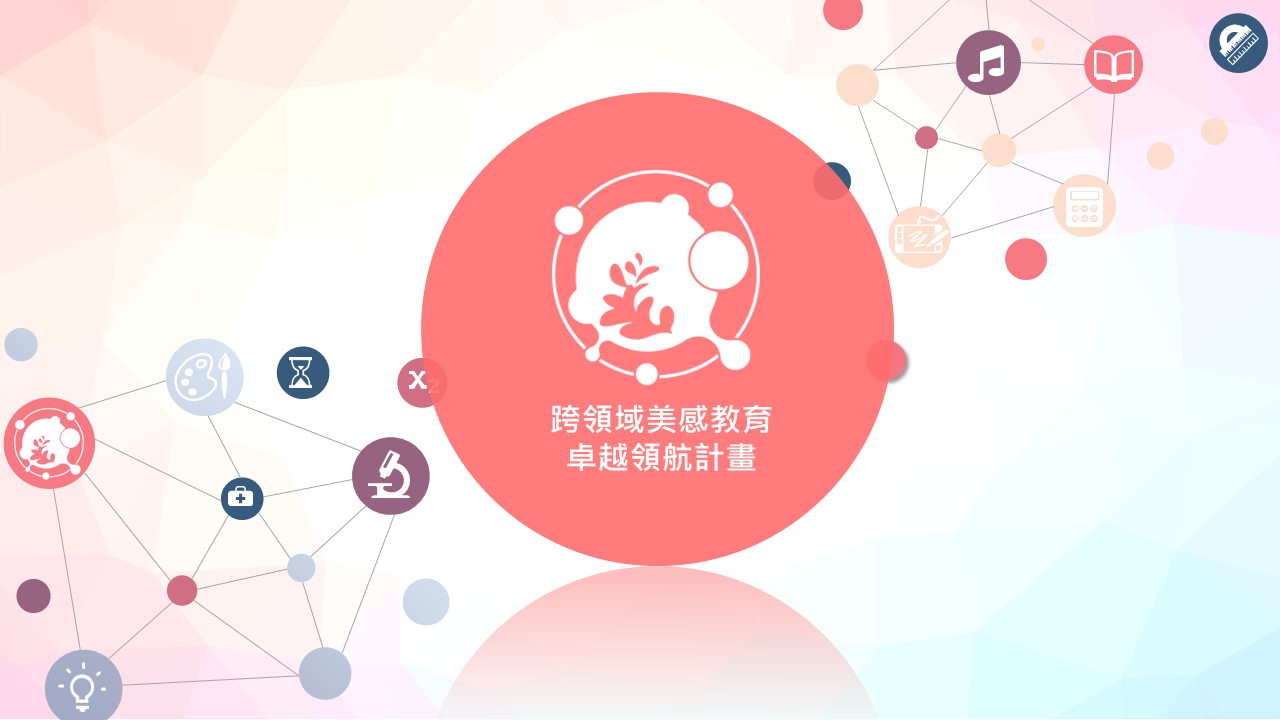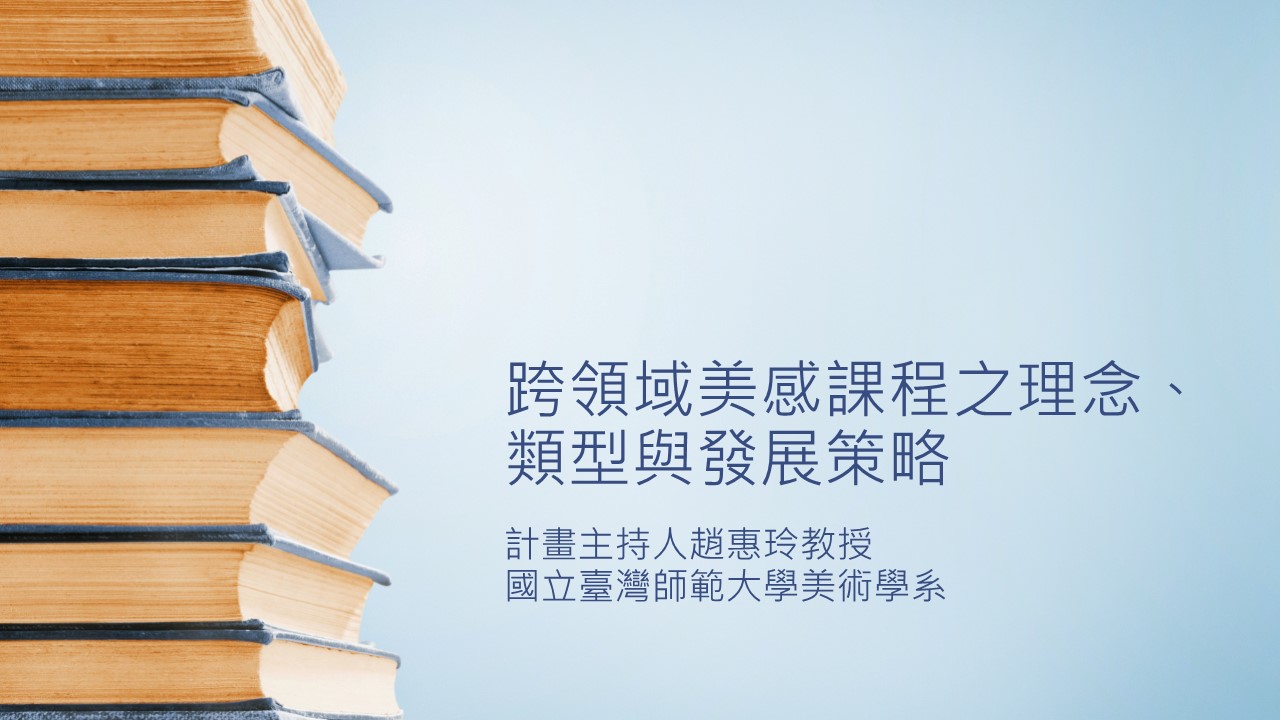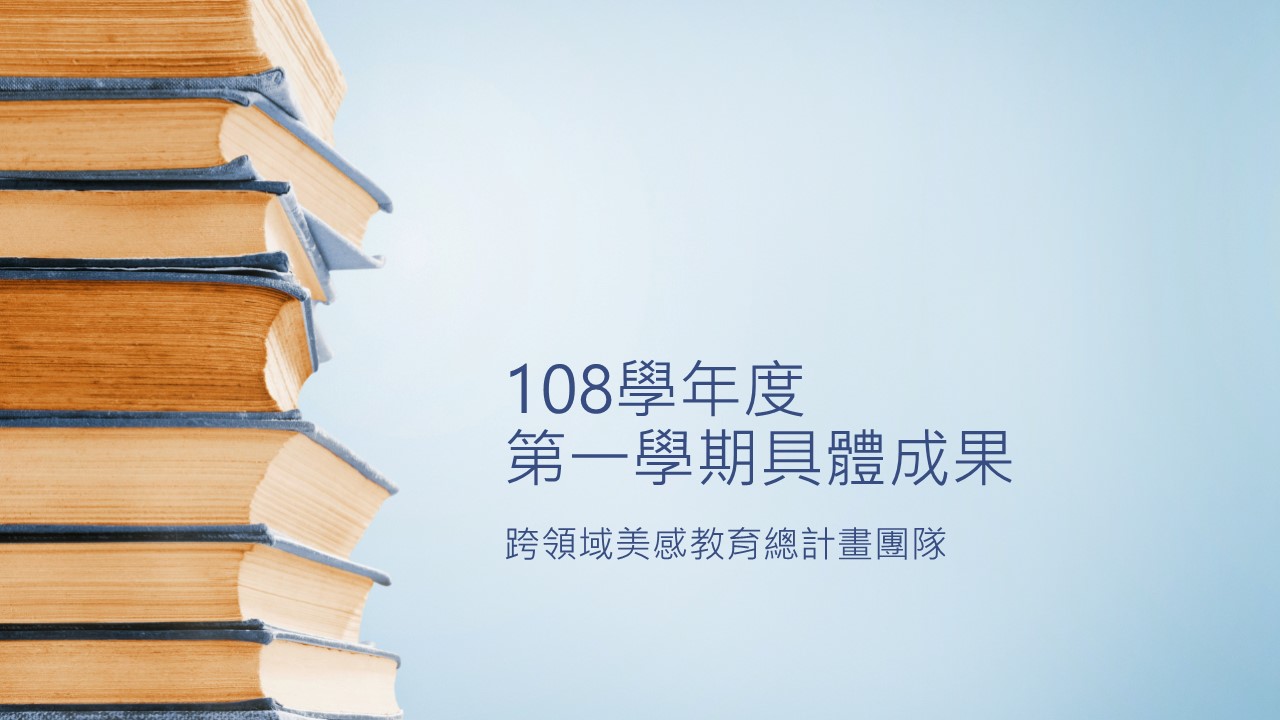Exploring cross-field aesthetic courses based on STEAM education
Professor Guo Mei, Department of Music, National Taitung University
I. Introduction
The 21st century is the era of technological networks. Facing the rapidly changing challenges and environment in the future, human beings' lifestyles and learning methods have undergone tremendous changes. Countries around the world are paying more and more attention to the development of key national abilities, and The key capabilities to be possessed include the ability to quickly adapt to social changes, as well as the ability and attitude to face future work; among them, the 21st Century Key Competencies Alliance in the United States has integrated the experience and suggestions of education scholars, experts and entrepreneurs to formulate The specific learning framework believes that in addition to information technology capabilities, students must also possess 4C capabilities, namely critical thinking, collaboration, communication, and creativity and innovation.
The information literacy of citizens in the new century is closely related to national competitiveness. In 1996, the National Science Foundation (NSF) proposed "STEM" (Science, Technology, Engineering, and Math) in the "Shaping the Future World" report. A set of educational methods that emphasizes learner-centeredness and actively cultivates students' independent thinking and creative abilities.
In 2019, the Ministry of Education of China proposed the addition of the science and technology field to the curriculum syllabus for the 12th National Basic Education. This field includes "information technology" and "life science and technology", emphasizing the spirit of inquiry in cross-field learning of "learning by doing" and focusing on design and creation. , critical thinking, logical operations and other abilities that are in line with future trends. It emphasizes cultivating students' ability to use emerging technologies to solve life problems, especially in the field of information technology learning. It pays special attention to the cultivation of computational thinking abilities and incorporates programming. The scope of national basic education is expected to improve each learner's problem-solving and critical thinking abilities, and to solve life problems through practical hands-on practice, which will serve as the basis for innovation and invention and become a new wave of future learning.
2. STEAM education concept
In 2009, U.S. President Obama extended STEM education to expand the teaching stage from kindergarten to 12th grade (K-12), which aroused social repercussions. The STEM education concept proposed by the United States aims to strengthen the ability of American K-12 in science, technology, engineering, and mathematics to make up for the weaknesses of its basic education in science and engineering. Since the term STEM is a concept proposed by scientists, humanistic aesthetics and literacy are often ignored. Behind the new technology, there seems to be a lack of warm educational packaging and beauty. Only by using artistic elements to break the framework principle can we create moving works. The broad and inclusive nature of "Art" not only enables the horizontal and diversified development of various disciplines, but also uses emerging technologies to improve life. Therefore, expanding STEM into STEAM, adding Art, and combining language, humanities, design, music, art and other subjects can not only stimulate creativity, but also express more through engineering and artistic interpretation in technological innovation. Unique human emotions and creativity.
STEAM education emphasizes the educational concept of interdisciplinary, real-life situations and practical inquiry. In response to the development trend of key abilities in the 21st century, Taiwan's Ministry of Education emphasizes that students should possess the "5C key core abilities of the 21st century" defined as communication, coordination, 5C abilities such as teamwork (Collaboration), complex problem solving (Complex problem solving), critical thinking (Critical thinking), and creativity (Creativity) are not only in line with the global STEAM curriculum trend, but also include Science, Knowledge in various fields of Technology, Engineering, Art and Mathematics.
The artificial intelligence technology currently leading mankind into the fifth industrial revolution is a technology that spans science, technology, engineering, art and mathematics; while robots are works that combine knowledge and achievements in STEM and other disciplines and are widely used as Learning vehicles and achieving good results; how to integrate artificial intelligence education with school curriculum is attracting the attention of educators around the world.
With the launch of the Twelve Years of National Education, Taiwan's education reform has reached a new milestone. Whether in curriculum development or teacher teaching, both are keeping pace with the trends of the times and moving towards innovative education. STEAM courses emphasize learning from practice and how to integrate cross-domain knowledge and solve problems; and China’s Ministry of Education mentions that core citizen literacy includes three aspects: independent action that can effectively solve life problems; the ability to cooperate appropriately with others communication and interaction and social participation that can be actually put into action. School education should stimulate students' learning motivation, regard students as active learners, and be able to apply what they have learned in the curriculum in daily life, and make clever use of "art" elements to give the created results an attractive visual expression. Move people's hearts and create better value. On the other hand, the new curriculum concept is expected to break through the previous recitation of knowledge in a single subject, increase the diversity of learning situations, and conduct problem-oriented learning that is integrated, exploratory or practical across disciplines. content, cultivating students' comprehensive ability to apply learning literacy in real situations.
Technology is changing with each passing day. Learning STEAM is not the end, but making good use of tools to help each child obtain the most suitable learning and transferable abilities in the right place and place. Therefore, using STEAM course teaching, focusing on integrating cross-field subject knowledge, using contextual and practical course design, let students understand integrated knowledge concepts, and conduct in-depth exploration and practical discussions during the learning process to provide students with knowledge The ability to solve practical problems and achieve expected teaching goals is worthy of attention and promotion.
3. STEAM course structure and design with robot face-changing art as the core
Cross-field aesthetic education focuses on the mutual integration of knowledge from various disciplines, emphasizes the effective connection of students' learning experience, and changes the previous de-semanticization and subject knowledge infusion. STEAM education combines the fields of science and art to enhance students' knowledge, interests and academic achievements across subject areas. Therefore, the main results of STEAM education should focus on cultivating students' creativity and problem-solving abilities, stimulating students' enthusiasm, leading students to think, teaching students how to learn, and being able to demonstrate specific results, so that learners can have the opportunity to learn from a single of learning areas develop into cross-domain learning performance.
Artificial intelligence has been around for decades, and for most people, the most recent forms of artificial intelligence are cell phones and computers. As long as you speak to the mobile phone, there will be a voice response. These are all due to the advancement of artificial intelligence. The sudden and rapid progress of artificial intelligence is attributed to the major breakthroughs in image recognition, speech recognition, natural language processing and other fields in 2010. Through photo scanning technology, artificial intelligence can clearly identify animals and humans and use computer-generated speech to answer. In addition, when shopping or watching videos online, the computer will automatically display a list of recommendations. This is also the result of the operation of artificial intelligence. Artificial intelligence has become an indispensable helper in our daily lives. The most representative product of artificial intelligence technology is machines. Integrating robots into STEAM courses is one of the best options to train students to use artificial intelligence technology and integrate courses from various disciplines. The concept and learning of this cross-field course Robot STEAM cross-field course are analyzed as shown in the figure. As can be seen from the figure, this cross-disciplinary course connects knowledge in the fields of technology (information technology), art (music and art) and robotics (STEM). Through the living and learning situations created by teachers, students can actively think, discuss, associate and flexibly apply the knowledge they have learned, and then solve the problems encountered by hands-on practice. In the learning process, students' intrinsic learning motivation and effectiveness can be promoted, and learning problems can be solved. The difficulties encountered and connected with their daily life experiences are summarized as follows:
(1) In the field of art, it is divided into two aspects: music and visual art. In the music section, we will conduct an appreciation of Beiguan music and Nanguan music, and explore how to choose appropriate soundtracks for face-changing art and other application scenarios; in terms of visual art, we will learn about the representative tattoos, masks and facial makeup from around the world. culture, and explore the meaning behind it and its impact on human beings, such as the tattoos of Taiwanese aborigines and the local formation culture.
(2) In the field of technology, information technology courses mainly teach students to understand algorithms and visual programming, and write interactive programs for robots through the stacking of building blocks; therefore, this course breaks through the scope of aesthetic education that only exists in museums. , revealing the close relationship between beauty and life. After understanding the art and culture of facial makeup, he conducted mask drawing and digital facial makeup design, and provided the digital facial makeup to the robot as facial makeup material for face-changing art. Finally, through information technology courses, students learn programming and create their own most touching and unique digital face-changing art mask (Picture 2).
4. Implementation of cross-field aesthetic courses
The cross-field aesthetic course’s Robot STEAM cross-field course teaching activity design uses expertise in information technology in the technology field and music and visual arts in the art field to bring together a professional community of teachers from different fields to jointly prepare, discuss and design lessons for five years Zhou's "STEAM of Robot Face Changing Art" cross-field teaching activity emphasizes the planning of practical and inquiry activities based on students' daily life experience, and applies it to university general courses. In the electronic multimedia teaching activities, through the course, students can understand how to carry out interactive programming of AI robots through the core concepts of robots such as mechanism, power, control, interaction, intelligence, etc.; and develop the art of face-changing in Sichuan Opera as the main content. Think, think about the meaning behind each culture’s facial makeup. Collaborative learning through course planning, with a learning attitude of "mutual assistance", "interaction" and "sharing the good", allows learners to use the knowledge learned in STEAM cross-field courses, apply it to robots, and conceive how to combine it with BGU Music, design a face-changing AI robot with its own facial makeup to perform. The implementation steps are as follows:
(1) Evolution of robots
This cross-disciplinary aesthetic course is in the general category. In the course, we will discuss the word "robot". What will the picture that appears in everyone's mind look like? Has facial features, limbs and a torso, can speak, and even express emotions? But there are also many people who don't like robots, probably because movies often portray robots as "threats to the human species" and label them as capable of destroying the world. In addition, our attitude and favorability towards robots are also restricted by media culture. Through qualitative research, we found that Asian countries are more accepting of humanoid robots than British and American countries. After comparing the meanings of Chinese and English words, we can It was found that Chinese and Western countries have different views on robots. Compared with the English word "robot", the Chinese word "robot" has an extra "human" character. This difference reflects the different perceptions of different cultures. Asian countries Most people think that robots should be emotional and have human images, while in Western countries, they are defined as "machines" controlled by computers and used to perform automated tasks. "Robot" was used for the first time in 1922. The word originated from the stage play "Rosseau's Universal Worker" written by Czech writer Karel Čapek (1880-1938). Čapek This word is used to refer to "artificial workers who can replace ordinary people in labor work and allow people to have more time and energy to devote to creative matters" in the play. The show had a profound impact on future generations and established our imagination of what robots should look like.
How to make robots closer to humans? It has always been the goal of academic and research fields. For example, Google, Amazon, Microsoft, Tencent and many new startups have invested in research and development in the field of robots. Although the robot is just a physical carrier, there is a lot of technological research and development and practice behind it, especially breakthroughs in artificial intelligence technology, which have allowed robots to enter the field of education. In the design of this cross-field aesthetic course, the robot used is Kebbi Air , it can interact with people naturally and integrate learning results from various fields on this carrier to create a warm learning experience.
(2) Discussion and appreciation of Beiguan music
Beiguan music has a profound influence on Taiwan's modern traditional culture. It is one of the main types of music of the Han people. It was introduced with immigrants from southern Fujian three or four hundred years ago. It is closely integrated with folk religious ceremonies and local activities, and is also a favorite of residents. An important entertainment activity, Beiguan music and Nanguan music have become important cultural assets in Taiwan. The course topics in this area start from the history and development of Beiguan music, and then introduce its cross-border applications. The course uses actual music as an example to listen and identify the differences and characteristics of the northern and southern guan. Then it starts from the perspective of the development history of northern guan music, the instruments used, musical scores and types... and uses multiple audio and video examples to establish a sense of hearing. Develop the concept of Beiguan music and understand different types of works that combine elements of Beiguan music with cross-border ideas, including works that combine the plot and musical elements of traditional Beiguan repertoire with modern band arrangements; and transform Beiguan gongs and drums, original The music material of folk songs is a fusion of Chinese and Western folk instrumental music, and the works are composed of free improvisation and jazz music vocabulary.
By analyzing the form of cross-border music works, it can be found that the traditional elements of Beiguan music are combined with modern Chinese and Western instruments, or music elements and work materials from different countries. What they convey is that cross-border works "sound locally and resonate with the world" The idea is to showcase Taiwan's unique new music style and then understand the diversity of the development of today's music groups. It is actually a manifestation of cross-disciplinary beauty that is truly implemented in art.
(3) A preliminary study on the art of facial makeup
Discuss the cultural significance of face tattoos, masks and facial makeup. Why do humans paint their faces? Is it the nature of beautification? A mysterious religious event decoration? Or a mark engraved on a person.
1.Tattoo pattern
During the interwar period, tattoos were a patriotic symbol. In the 1940s and 1950s, tattoos were denigrated as socially deviant or even associated with crime. During the counterculture movement of the 1960s, tattoos became a means of expressing non-mainstream positions, sometimes as a symbol of barbarism, upper class Blindly following the trend, or a sign of depravity. But among Austronesian languages (such as the Atayal), face tattoos are a symbol of family glory. Tattoos have different meanings for people of different generations, and the social perceptions they bring to people also change with politics, international situations, and ever-changing fashion trends.
2.mask
Compared with the contemporary connotation of tattoos, masks come in many types and are often used in rituals, entertainment, wars, hunting, totems, etc., and play an important role in dramas and performances. For example, theater masks have the same rich and varied expressions as actors' faces, and can convey the ups and downs of emotions such as joy, anger, sadness, and calmness, arousing resonance with the audience. In the celebration ceremony, the colorful masks and unique shapes, combined with the performers' movements and dances, can make the ceremony filled with an atmosphere of joy and fantasy. For example, the Nuo ceremony is a sacrificial activity performed by Chinese people in ancient times. It aims to drive away ghosts and plagues, and reward the god Naji. It is centered on witchcraft activities. It is the product of primitive people's nature worship, ancestor worship, ghost worship and animistic concepts. It is one of the formation cultures in Taiwan's folk beliefs. The eight generals are also a kind of Nuo dance.
3.Facebook
The art of facial makeup is inseparable from the development of Chinese opera. It is said that in the Northern and Southern Dynasties and the Sui and Tang Dynasties, there were "masked songs and dances" in the music and dance programs. This mask is the originator of facial makeup. With the development of Chinese opera art, artists often use powder ink and oil paint to draw directly on their faces, gradually giving birth to facial makeup. Since the troupe mainly performs in the open air, audiences far away from the stage often cannot see the facial expressions of the actors clearly. The facial expressions of the actors can be clearly seen by the audience at a distance.
(4) Digital facial makeup design and implementation
Through the image tracing and brush tools of Illustrator, you can create facial makeup that has the characteristics of "kneading face": solemn and majestic, focusing on color adjustment and emphasizing the texture of facial features; "hooking face": gorgeous colors and rich patterns , complex and beautiful, colorful, and some are even covered with gold and silver, which is extremely gorgeous; "face painting": mostly light colors, painted with powder on the face, not showing the true face, highlighting the treacherous and bad character, digital facial painting with three major characteristics, The face when performing art as an AI robot.
(five)artificial intelligencerobot
The shortcoming of artificial intelligence is the lack of art and creativity. Although it cannot show the emotional side of humans or observe emotions, it can play a role in assisting humans. Therefore, in this cross-field aesthetic course, we use artistic elements and the integration of information technology, use existing knowledge and abilities to actually write interactive programs for robots, and use the five major learning elements of robots to think, create, and design the best Use the digital facial makeup to create your own unique face-changing art, and finally apply it to the AI robot to present performing arts, achieving the effect of upgrading the aesthetics of technology.
5. Conclusion
The field of art education is broad and inclusive, and the cross-disciplinary thinking of aesthetic education courses emphasizes the integration of art learning with different disciplines, cultures, and life, refining individual aesthetic cognition, and strengthening education that integrates sensibility and rationality. Education must start from life. How to stimulate students' independent learning is the primary core goal of the 12-year National Basic Education of "spontaneity, interaction, and mutual benefit". Our country's teacher training process, due to the specialization of knowledge, mostly trains teachers in a single subject area. However, in the face of diverse cross-field curriculum design and implementation, it will become a challenge for teachers to implement STEAM courses. In education in the digital age, classrooms are not the only learning field, and teachers are no longer the only imparters of knowledge. The imagination of "teachers" must also break away from the original framework and think across domains. In addition to ordinary school teachers, peer and online learning , industry teachers, etc., will all be good learning objects for students. Especially when emerging technologies require changes in traditional teaching methods, it is a new challenge for both teachers and students. In the promotion and practice of the new national education curriculum for the 12th year, in addition to mastering the timing of teaching, it is also necessary to propose effective teaching strategies, stimulate discussion and "interaction" between teachers and students, and avoid "integration for the sake of integration", in order to achieve The so-called "sharing the good" learning effect. As for the promotion of STEAM education in our country in the future, the first priority is to improve the quality of teachers participating in STEAM education. The concepts coincide with each other; through STEAM teacher teamwork and the establishment of a professional community of teachers, they can communicate with each other, complement each other's expertise, and jointly design cross-field By integrating the curriculum and conducting collaborative teaching, you can grasp the key to the success of STEAM education implementation. In this post-epidemic era, how to move from STEAM education to technology-based epidemic prevention will be an important topic for teachers and students to discuss together in the future.

